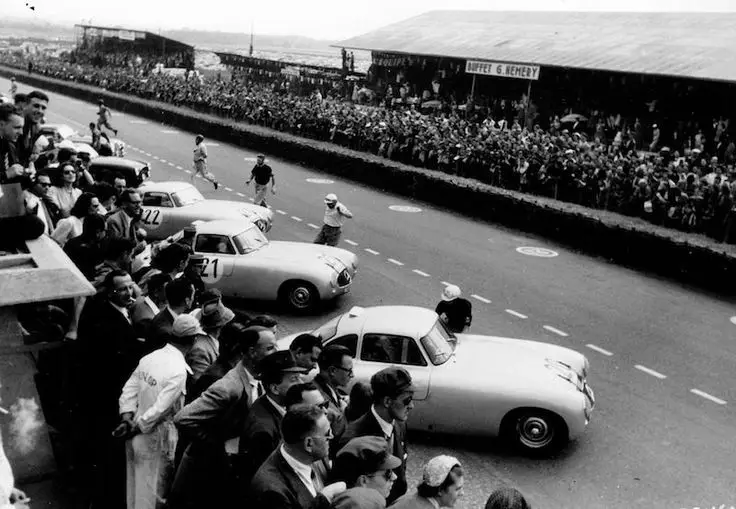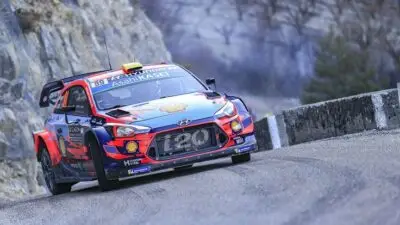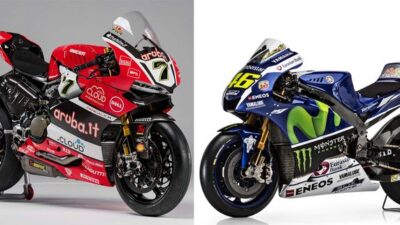The 24 Hours of Le Mans stands as motorsport’s ultimate test of endurance, skill, and engineering excellence. Taking place on the historic 8.5-mile Circuit de la Sarthe in France, this legendary race pushes drivers and machines to their absolute limits. The race transforms into a complete ecosystem where teams must manage not just speed but strategy, driver rotation, and mechanical reliability while battling fatigue through day and night conditions.

Inside the cockpit, drivers face unique challenges that go beyond normal racing demands. They must stay hydrated and focused while reaching speeds over 200 mph, often in changing weather conditions. Meanwhile, the race control center serves as the nerve center, monitoring every aspect of the competition to ensure safety and fair play as teams execute precise pit strategies that can make the difference between victory and heartbreak.
The atmosphere surrounding Le Mans is unlike any other motorsport event. From the iconic garages where logistics efforts become mind-boggling to the passionate fans camping throughout the circuit, Le Mans creates a unique blend of high technology and raw human determination. Teams will cover over 5,000 kilometers during the 24-hour period, making each lap a crucial part of a complex endurance puzzle.
Key Takeaways
- Le Mans combines strategic planning, driver endurance, and engineering excellence across 24 continuous hours of competition.
- Teams must navigate constantly changing conditions while maintaining peak performance from both humans and machines.
- The race represents motorsport’s ultimate challenge, where preparation and adaptability determine which competitors will achieve racing immortality.
The Essence of the 24 Hours of Le Mans
The 24 Hours of Le Mans represents the pinnacle of endurance racing, combining human perseverance with automotive innovation. This legendary event tests both machines and drivers to their absolute limits while maintaining a rich heritage that spans nearly a century.
The Challenge of Endurance Racing
The 24 Hours of Le Mans stands apart from traditional races through its unique format. Unlike races that end after a set number of laps, Le Mans concludes when 24 hours have passed, typically starting at 4:00 PM Saturday and finishing at 4:00 PM Sunday.
This grueling timeline forces teams to balance speed with reliability. Cars must withstand punishing conditions for a full day while drivers rotate in shifts to combat fatigue.
Many motorsport enthusiasts consider “happy hour” – the sunrise transition from night to day – as one of the most captivating moments that truly captures the essence of Le Mans. The challenging nighttime hours reveal which teams have prepared most thoroughly.
Weather often plays a decisive role, with teams sometimes facing rain, fog, and clear conditions all within the same race, requiring split-second strategy adjustments.
Le Mans as a Motorsport Tradition
First held in 1923, the 24 Hours of Le Mans has become the world’s oldest-surviving endurance racing event. The race takes place on the Circuit de la Sarthe, a unique track combining public roads with dedicated racing sections.
The famous “Grid Walk” before the race starts represents one of Le Mans’ most distinctive traditions, creating an electric atmosphere as fans gather alongside the cars moments before the start.
Le Mans has evolved beyond just racing to embrace sustainable development and social responsibility. The event now actively promotes a fairer, more inclusive motorsport culture.
Different racing categories compete simultaneously, creating a multi-class competition that adds strategic complexity as faster cars navigate through traffic.
Significance in Motorsport History
Le Mans has served as the proving ground for numerous technological innovations that later appeared in production cars. Disc brakes, aerodynamic designs, and fuel efficiency advances all found early testing at Le Mans.
The race has created legendary status for manufacturers like Porsche, Audi, and Ferrari, who battled for supremacy over decades. Their rivalries defined motorsport history and captured global attention.
Le Mans transcends traditional motorsport by combining innovation with human perseverance. The event creates unforgettable moments that test both mechanical engineering and human endurance.
The race’s impact extends far beyond the automotive world, becoming a cultural touchstone featured in films, books, and video games, cementing its place as the world’s most prestigious endurance event.
Life Inside the Circuit de la Sarthe During the Race
The Circuit de la Sarthe transforms into a vibrant microcosm during the 24 Hours of Le Mans, where fans and teams create a unique community for a full day and night of racing. The 13.626 km track becomes home to thousands of passionate spectators who experience motorsport in its purest form.
Atmosphere and Sights Trackside
The Circuit de la Sarthe offers numerous iconic viewing spots where fans gather to witness the spectacle. At Tertre Rouge, the atmosphere electrifies as cars accelerate onto the Mulsanne Straight, creating a symphony of engine sounds day and night.
The pit lane buzzes with constant activity – teams working frantically during pit stops, engineers analyzing data, and drivers preparing for their stints. This area represents the technical heart of the race.
Indianapolis corner draws crowds for its excellent photography opportunities, with cars moving at slower speeds through this technical section. Fans need only a general admission pass to access this prime viewing location.
As night falls, the track transforms completely. Headlights pierce the darkness while brake discs glow red-hot through corners, creating a mesmerizing light show for spectators.
Fan Experience and Culture
The Le Mans experience extends far beyond watching cars. Campsites surrounding the circuit become temporary communities where fans from across the globe share their passion for motorsport.
Fan traditions include:
- Ferris wheels offering panoramic views
- National flags marking fan territories
- Barbecues and impromptu parties
- Staying awake through the night to witness the full race
The unique mix of permanent track sections and public roads creates an accessibility not found at other circuits. Fans can walk considerable portions of the track and position themselves mere meters from racing action.
Weather plays a dramatic role in the experience. Rain can arrive suddenly, creating mad dashes for cover while transforming racing conditions. The unpredictable climate of northwestern France adds another layer of drama to the already intense atmosphere.
On the Track: Cars and Teams in Action
The 24 Hours of Le Mans showcases world-class automotive engineering and driver skill across diverse racing conditions. Teams battle through day and night on one of motorsport’s most challenging circuits, where both technological innovation and strategic execution determine the victors.
Key Manufacturers and Rivalries
The 2025 edition of the 24 Hours of Le Mans featured intense competition between legendary manufacturers. Ferrari claimed victory with its satellite #83 entry driven by Phil Hanson, Robert Kubica, and Yifei Ye. This win marks Ferrari’s second consecutive triumph after their 2024 success with the #50 car.
Porsche remains Ferrari’s strongest challenger, narrowly missing out on the top spot but preventing a Ferrari 1-2-3 finish. The German manufacturer’s #6 car finished just 16 seconds behind the leader in the closing stages.
Toyota continues to demonstrate Japanese engineering excellence with their #7 car securing second place in the 2024 race, showing their consistent performance at Le Mans.
BMW has also returned to top-level competition, bringing their distinctive approach to aerodynamics and power delivery to challenge the established competitors.
Classes and Car Technologies
Le Mans features distinct racing categories that showcase different technological approaches:
Hypercar Class (Top Class)
- Purpose-built prototypes with hybrid powertrains
- Power output restricted to 680 hp
- Manufacturers include Ferrari, Porsche, Toyota, and BMW
- Focus on efficiency and reliability over 24 hours
LMGT3 Class
- Production-based GT cars
- More closely resembles road cars than prototypes
- Balance of Performance regulations to ensure competitive racing
- Popular with privateer teams due to lower costs
The technological innovation at Le Mans far exceeds what’s seen in series like NASCAR, with a focus on endurance and efficiency rather than pure speed. Cars must balance aerodynamic downforce with reduced drag to achieve optimal performance on both the high-speed Mulsanne Straight and technical sections.
Fuel efficiency remains crucial, with teams carefully managing consumption through engine mapping and driving techniques.
Night Racing and Changing Conditions
Racing through darkness presents unique challenges that test both man and machine. Drivers navigate the circuit with only their headlights illuminating the road ahead, requiring intense concentration and perfect track knowledge.
The 2024 race featured particularly challenging rain conditions, creating a treacherous racing surface. Teams must adapt their strategies instantly when weather changes, making split-second decisions about tire compounds and driver changes.
Temperature fluctuations between day and night significantly affect:
- Tire performance and degradation
- Engine cooling requirements
- Aerodynamic efficiency
- Fuel consumption rates
The most successful teams anticipate these changing conditions and prepare multiple contingency plans. Driver changes often coincide with changing weather, allowing teams to match their strongest wet-weather drivers to challenging conditions.
Iconic Track Features
The Circuit de la Sarthe combines public roads with dedicated racing sections, creating a unique 8.467-mile (13.626 km) challenge with several legendary features:
Mulsanne Straight: A 3.7 km stretch interrupted by two chicanes where cars reach top speeds exceeding 330 km/h. Before the chicanes were added in 1990, cars achieved speeds over 400 km/h.
Tertre Rouge: This famous right-hand corner leads onto the Mulsanne Straight. Getting the exit perfect is crucial for maximizing straight-line speed.
Indianapolis and Arnage: A challenging sequence featuring a fast, banked right-hander followed by a tight hairpin that tests braking systems and driver skill.
Porsche Curves: A flowing series of high-speed corners that reward precise driving and aerodynamic efficiency. Many races are won or lost in this technical section.
The track’s combination of high-speed sections and technical corners makes it the perfect proving ground for automotive engineering prowess, testing every aspect of a car’s performance over 24 grueling hours.
Pit Lane Dynamics and Strategy
The pit lane at the 24 Hours of Le Mans serves as a critical battleground where races are often won or lost. Teams execute complex operations against the clock while adapting to changing race conditions and safety protocols.
Pit Stops and Crew Operations
At Le Mans, pit stops require precision and teamwork under immense pressure. Unlike Formula 1’s sub-three-second stops, the 24 Hours of Le Mans mandates that cars must be completely turned off during refueling. No tire changes or repairs can occur until the fuel hose is detached.
A typical Le Mans pit crew consists of:
- Refueling specialists (2-3 members)
- Tire changers (4-8 members)
- Driver assistant (helps with driver changes)
- Car controller (oversees the entire operation)
Recent rule changes have improved efficiency, as teams can now bring two air guns into the working area and change wheels during refueling. This significantly impacts strategy across all teams.
Ferrari, Porsche, and BMW pit crews demonstrate remarkable consistency, often completing driver changes, refueling, and tire replacements in under a minute despite the complex regulations.
Safety Cars and Race Interventions
Safety car periods dramatically alter race dynamics at Le Mans. When deployed, the safety car bunches the field together, eliminating time gaps built over hours of racing.
Top teams like Porsche and Ferrari employ dedicated strategists who calculate:
- Optimal pit timing during safety car periods
- Fuel conservation opportunities
- Potential track position gains
The Circuit de la Sarthe’s length means safety car interventions often create “trains” of cars at different points around the track. This creates strategic dilemmas for teams deciding whether to pit immediately or wait another lap.
Safety car periods also provide crucial recovery time for drivers and allow mechanics to perform more thorough checks on the cars, potentially preventing future mechanical failures during the grueling 24-hour event.
Tire Management and Logistics
Tire strategy becomes increasingly crucial as track temperatures fluctuate dramatically during the 24-hour race. Teams must balance performance with durability while adapting to changing conditions.
BMW and Porsche engineers meticulously monitor:
- Tire pressure changes (±2-3 PSI from day to night)
- Wear patterns across different compounds
- Temperature management
Each manufacturer brings approximately 60 sets of tires per car to Le Mans, requiring extensive logistics planning. Teams typically pre-heat tires to optimal temperature before installation, saving precious seconds during pit stops.
Night stints present unique challenges, as cooler temperatures alter grip levels. Experienced teams adjust their tire compounds accordingly, sometimes sacrificing outright pace for consistency over a driving stint.
The pit lane’s strategic importance increases during rain transitions, when timing a switch to wet or dry compounds can gain or lose entire laps.
Behind the Scenes: Preparation and Execution
The 24 Hours of Le Mans demands extraordinary preparation and precise execution from teams and drivers alike. Success at the world’s most prestigious endurance race hinges on meticulous planning and adaptability during the grueling day-long competition.
Team Logistics and Engineering Challenges
Teams arrive at Circuit de la Sarthe days before the race to establish their operational bases. Each team brings tons of equipment and spare parts, creating temporary engineering centers in the paddock area.
Engineers face unique challenges at Le Mans, particularly with car setups that must function in varying conditions. Porsche, with its legendary engineering prowess, exemplifies the technical excellence required, having earned 19 overall victories at the event.
Teams must prepare for multiple weather scenarios, often developing specialized configurations for day, night, rain, and dry conditions. The pit crews rehearse tire changes and refueling operations repeatedly, aiming to shave precious seconds.
Behind-the-scenes preparation includes meticulous planning of fuel strategies, tire management, and driver rotations. Technical failures often determine race outcomes, making redundancy and reliability testing critical components of pre-race engineering.
Driver Insights and Mental Endurance
Drivers preparing for Le Mans follow rigorous physical and mental conditioning regimens. The race demands extraordinary focus during multiple stints behind the wheel, often in challenging conditions like darkness or rain.
As Autosport advises, successful drivers must “keep it consistent, manage the traffic, and nail the night”. Veterans develop specific techniques to maintain concentration during long stints, including visualization exercises and specialized nutrition plans.
Sleep management becomes crucial, with drivers creating precise rest schedules between driving shifts. Most teams utilize three drivers per car, with each typically driving 4-hour stints before resting.
The mental challenge intensifies during night hours (10 PM to 6 AM), when fatigue peaks and visibility diminishes. Experienced drivers report that maintaining rhythm and focus during these hours often determines race outcomes.
Driver interviews reveal that simulator training has become increasingly important, allowing teams to practice night driving and emergency scenarios before arriving at the circuit.
Le Mans in the Wider Motorsport Landscape
The 24 Hours of Le Mans stands as a cornerstone of global motorsport, influencing automotive technology and setting the standard for endurance racing excellence. Its unique position combines historical significance with cutting-edge innovation in a way few other sporting events can match.
Impact on Automotive Innovation
Le Mans has consistently served as a testing ground for automotive technology that eventually reaches consumer vehicles. Racing teams develop innovations under the extreme conditions of the 24-hour format, pushing boundaries of what’s possible in automotive engineering.
The race has directly contributed to advancements in:
- Fuel efficiency systems – hybrid powertrains were tested at Le Mans before becoming commonplace
- Aerodynamic design – many principles now standard in production cars
- LED lighting technology – first widely tested in racing conditions at Le Mans
- Tire development – including run-flat and extended-wear compounds
The race’s spirit of innovation combines with human perseverance to create technologies that transcend the racetrack. Since its founding in 1923, Le Mans has consistently pushed technological limits.
Comparison with Other Endurance Events
While Le Mans remains the most prestigious endurance race, it forms part of the “Triple Crown of Motorsport” alongside the Monaco Grand Prix and Indianapolis 500. What distinguishes Le Mans is its 24-hour duration and the variety of car classes competing simultaneously.
Unlike Formula 1’s sprint format, Le Mans demands:
- Mechanical reliability over extreme distances
- Driver teams capable of maintaining focus through day and night
- Strategic pit stops and resource management
The Circuit de la Sarthe’s 13.626km layout presents unique challenges compared to other endurance venues like Daytona or Spa. Cars cover over 5,000km during the event – equivalent to multiple Formula 1 Grand Prix distances.
Teams must master both high-speed sections and technical corners while navigating traffic from different classes, making it motorsport’s most complete challenge.
Legacy and Future Developments
Le Mans has cemented its legacy as the world’s greatest motorsport event through decades of memorable races and technological milestones. The race continues to evolve while maintaining its core traditions.
Recent developments shaping the future include:
Hypercar regulations introduced to attract more manufacturers and control costs while maintaining performance. This has brought renewed factory participation from Porsche, Ferrari, and other major manufacturers.
Sustainability initiatives are becoming increasingly central, with hybrid powertrains and alternative fuels playing major roles. The race now serves as a showcase for environmentally-conscious racing technology.
Le Mans continues to adapt to changing automotive landscapes while maintaining its essential character. Its influence extends beyond racing, setting benchmarks for performance, reliability, and innovation that shape the entire automotive industry.
Frequently Asked Questions
The 24 Hours of Le Mans has a rich history spanning nearly a century with iconic manufacturers, unique car classifications, and a challenging circuit. Fans often have questions about tickets, race distances, and how this endurance race differs from other motorsport formats.
What is the history of winning manufacturers at the 24 Hours of Le Mans?
The 24 Hours of Le Mans has seen several dominant manufacturers throughout its history since 1923. Porsche leads with 19 overall victories, followed by Audi with 13 wins and Ferrari with 9 wins.
In recent years, Toyota has emerged as a formidable competitor, securing multiple consecutive victories after years of heartbreaking near-misses. The race was created by the Automobile Club de l’Ouest to promote automotive innovation.
American manufacturers have also made their mark, with Ford’s famous GT40 winning four consecutive times from 1966 to 1969, a story dramatized in the film “Ford v Ferrari.”
How can one purchase tickets for the upcoming 24 Hours of Le Mans race?
Tickets for the 24 Hours of Le Mans can be purchased through the official race website or authorized ticket vendors. Various ticket packages are available to suit different budgets and viewing preferences.
General admission tickets provide access to public viewing areas around the circuit, while grandstand tickets offer reserved seating at key points. Premium packages may include paddock access, hospitality options, and parking.
Early booking is strongly recommended as tickets for this famous car race in the world often sell out quickly, especially for prime viewing locations like the main straight and Arnage corner.
What are the different classes of cars that compete in the 24 Hours of Le Mans, and how do they differ?
Le Mans features multiple classes competing simultaneously on the same track. Currently, the race showcases Hypercars (formerly LMP1), which are purpose-built racing prototypes with the highest performance capabilities.
LMP2 (Le Mans Prototype 2) consists of standardized chassis from approved manufacturers with cost caps to ensure competitive racing. These cars are slightly slower than Hypercars but still reach impressive speeds.
The LMGT3 (Le Mans Grand Touring 3) class features production-based sports cars like Porsche 911s, Ferrari 296s, and Corvettes. These cars are closest to what consumers might see on the road but are extensively modified for racing.
What is the approximate total distance covered by winning teams in the 24 Hours of Le Mans?
Winning teams at Le Mans typically cover more than 3,000 miles during the 24-hour period. The record distance was set in 2010 when an Audi R15 TDI Plus traveled more than 3,360 miles over the course of the race.
This distance is roughly equivalent to driving from New York to Los Angeles in a single day, highlighting the extraordinary endurance required from both cars and drivers. The exact distance varies each year depending on weather conditions, safety car periods, and track modifications.
Incredibly, modern Le Mans cars can achieve this while reaching speeds over 200 mph on the Mulsanne Straight and consuming significantly less fuel than early competitors thanks to advancements in efficiency.
How does the 24 Hours of Le Mans race format compare to Formula 1 racing?
The 24 Hours of Le Mans and Formula 1 represent fundamentally different approaches to motorsport. Le Mans is an endurance event lasting 24 continuous hours with multiple drivers sharing each car, while F1 races typically last about 2 hours with single drivers.
Le Mans features multiple classes racing simultaneously on the same track, whereas Formula 1 has a single class of purpose-built open-wheel cars. The Le Mans race tests endurance, dedication, and technology rather than pure speed.
Strategy also differs significantly. Formula 1 focuses on outright pace and limited pit stops, while Le Mans teams must balance speed with reliability, fuel efficiency, and tire management to survive 24 hours of continuous racing.
What are some of the most challenging sections of the 24 Hours of Le Mans circuit?
The Mulsanne Straight, despite its chicanes added in 1990, remains one of the most demanding sections where cars reach their top speeds exceeding 200 mph. The physical and mental strain on drivers at these speeds is enormous.
The Indianapolis and Arnage complex presents a difficult technical challenge, requiring drivers to rapidly decelerate from high speed for a tight right-hander before navigating the even slower Arnage corner.
Porsche Curves form perhaps the most respected section of the circuit, with flowing high-speed corners that require absolute precision. Racing through this complex at night in changing weather conditions is considered one of motorsport’s ultimate tests, separating good drivers from great ones.










